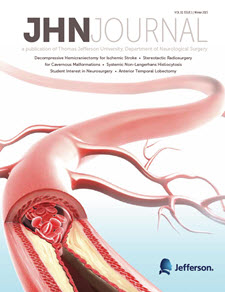Abstract
Introduction
The histiocytoses are a group of clinically diverse diseases distinguished from one another based on the specific immunophenotype of the lesional cells, implying derivation from the same precursor cell. Langerhans cell histiocytoses (LCH) diseases stem from abnormal dendritic cell lineages, while the non-Langerhans cell histiocytoses (non-LCH) are usually derived from an abnormal monocyte/macrophage cell line.1 Non-LCH with central nervous system (CNS) involvement is predictive of poor outcome. Histopathology is used to make a diagnosis of non-LCH. Immunohistochemistry and the clinical setting are used to differentiate between the various subtypes of non-LCH.1 The non-LCH can be divided into cutaneous non-LCH, cutaneous with a major systemic component, and systemic non-LCH.1 Erdheim-Chester disease (ECD) and Rosai-Dorfman disease (RDD) are systemic non-LCH diseases.
First described in 1930, ECD is characterized by xanthogranulomatous accumulations. The extent of infiltration is heterogeneous and can include skin, bones, lungs, kidneys, and the CNS. Approximately 500 cases have been reported so far.2 The majority of ECD patients harbor an activating mutation of the proto-oncogene BRAF, namely BRAF-V600E.3 Recent studies indicate CNS involvement as a predictor of highest mortality among ECD patients.4 First described in 1969, RDD is characterized by accumulation of histiocytes exhibiting emperipolesis in lymph nodes, in the head and neck or in extranodal sites. Extranodal sites include the CNS, skin, soft tissue and gastrointestinal tract. The clinical presentation is typically painless cervical lymphadenopathy with leukocytosis and a fever.5 The etiology of RDD is unknown.6 RDD with CNS involvement is rare and approximately 210 cases have been reported. CNS involvement typically lacks extracranial lymphadenopathy and resembles meningioma radiologically and clinically. 1 Select cases have demonstrated a combined presentation of ECD and RDD.2
In this report we describe a rare case presenting with headache and with clinically and pathologically overlapping features of RDD and ECD. We describe treatment and complications and review the existing literature regarding diagnosis and treatment for these rare conditions.
Recommended Citation
Barros, MS, Guilherme; Krupa, BS, Kelly; Krupa, BS, Kristin; Madineni, MD, Ravichandra; Kenyon, MD, PhD, Lawrence C.; and Farrell, MD, Christopher J
(2015)
"A Rare Case of a Systemic Non-Langerhans Histiocytosis Presenting with Diabetes Insipidus and a Tentorial Mass,"
JHN Journal: Vol. 10:
Iss.
1, Article 3.
DOI: https://doi.org/10.29046/JHNJ.010.1.004
Available at:
https://jdc.jefferson.edu/jhnj/vol10/iss1/3

